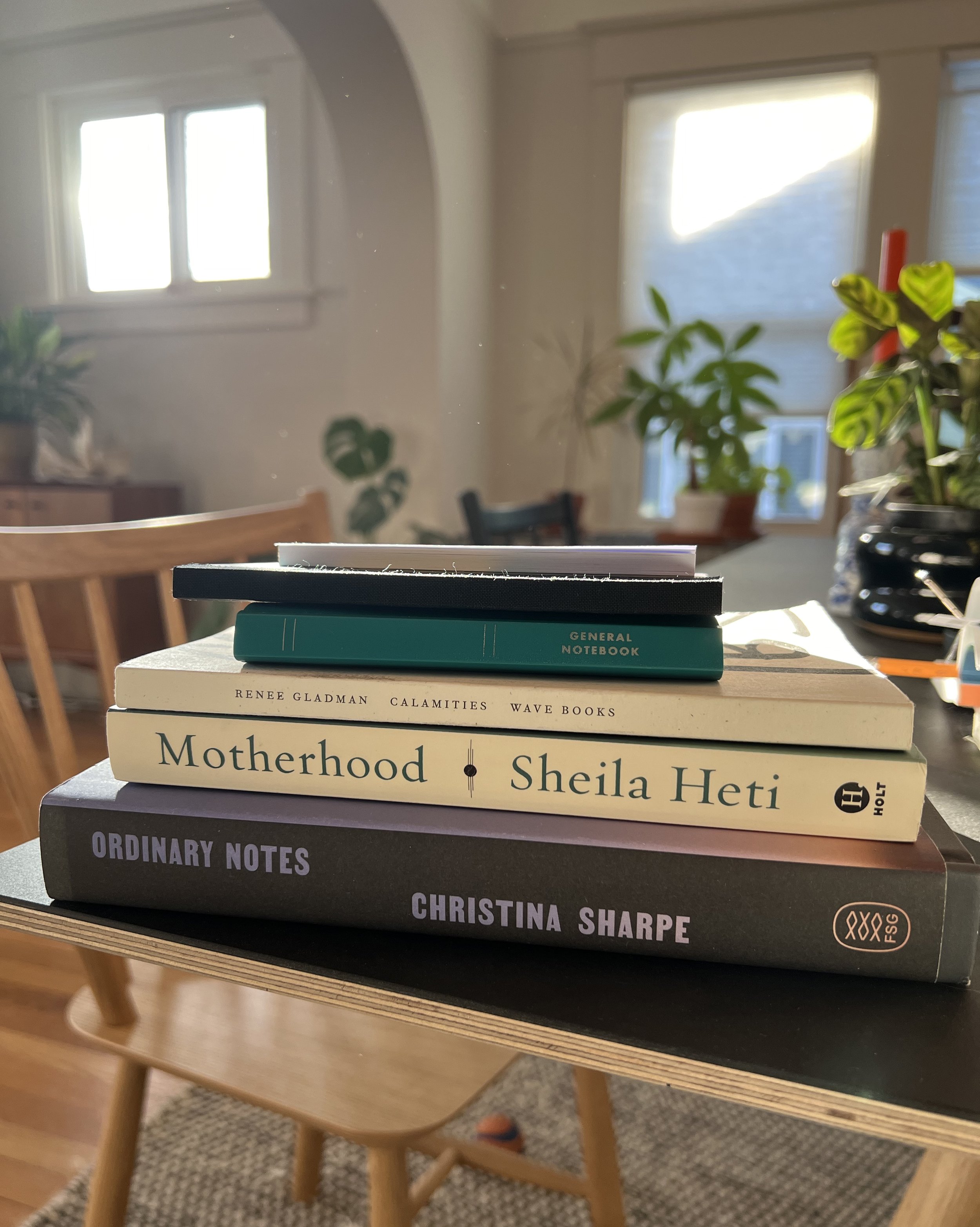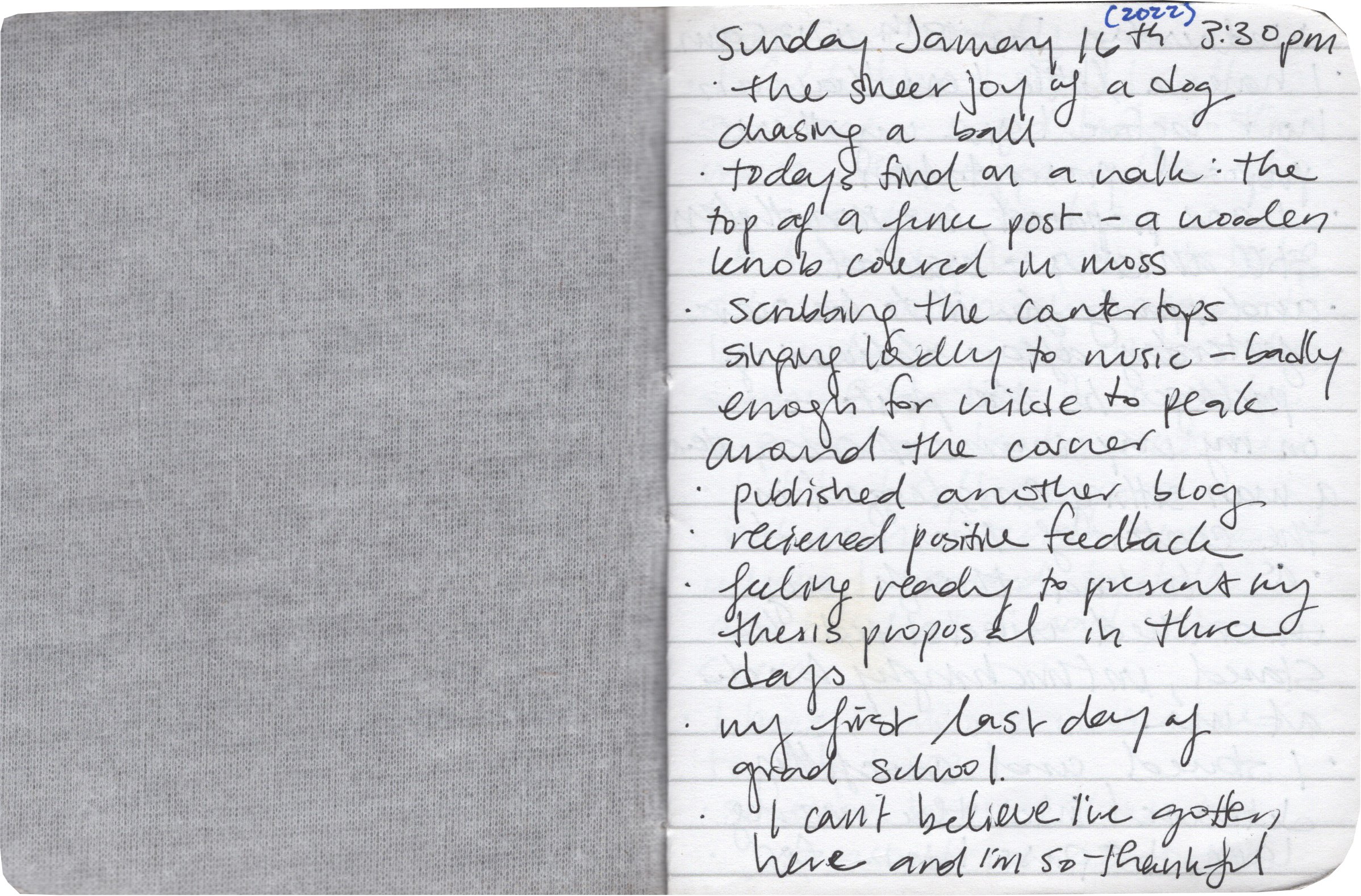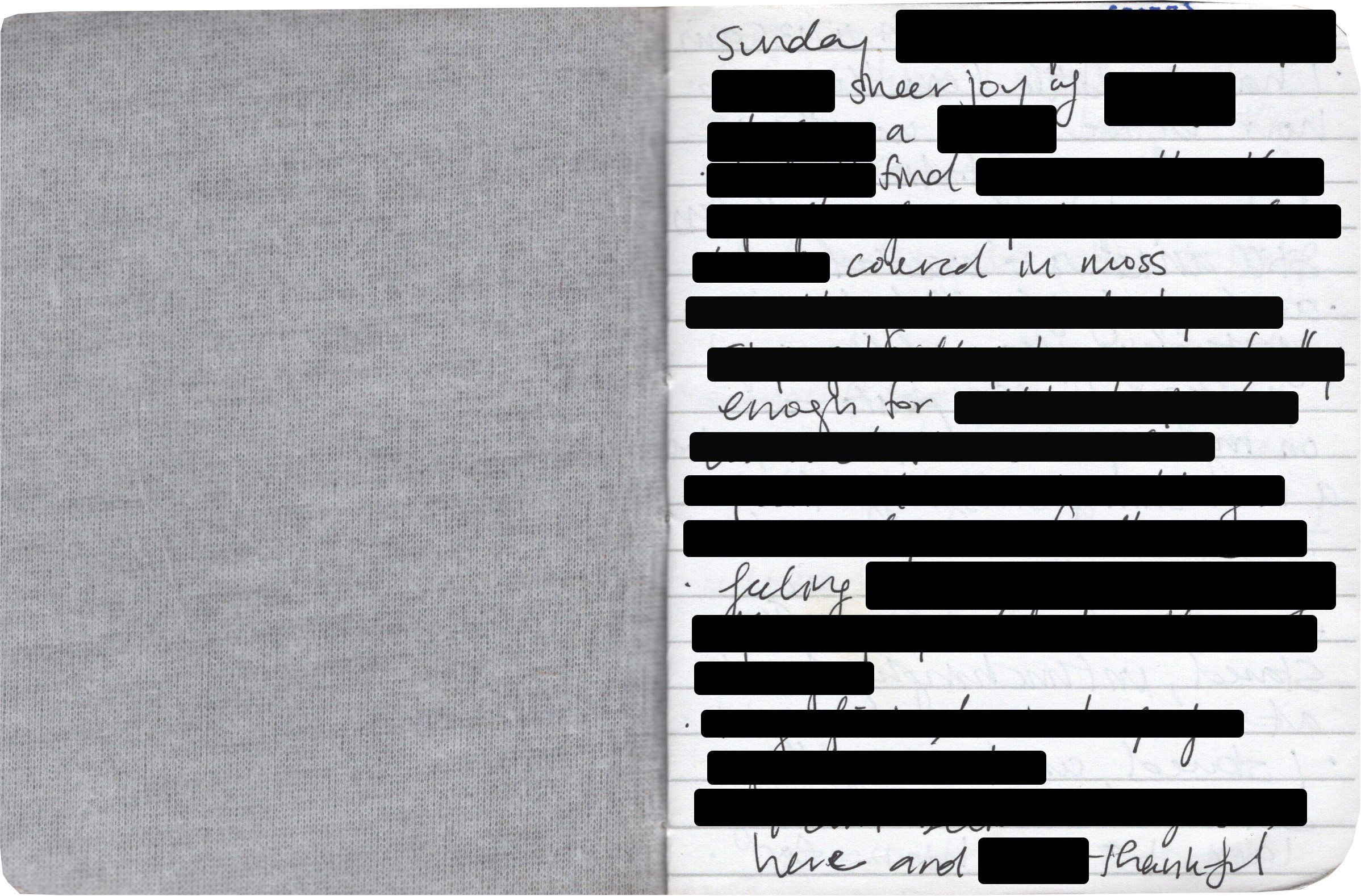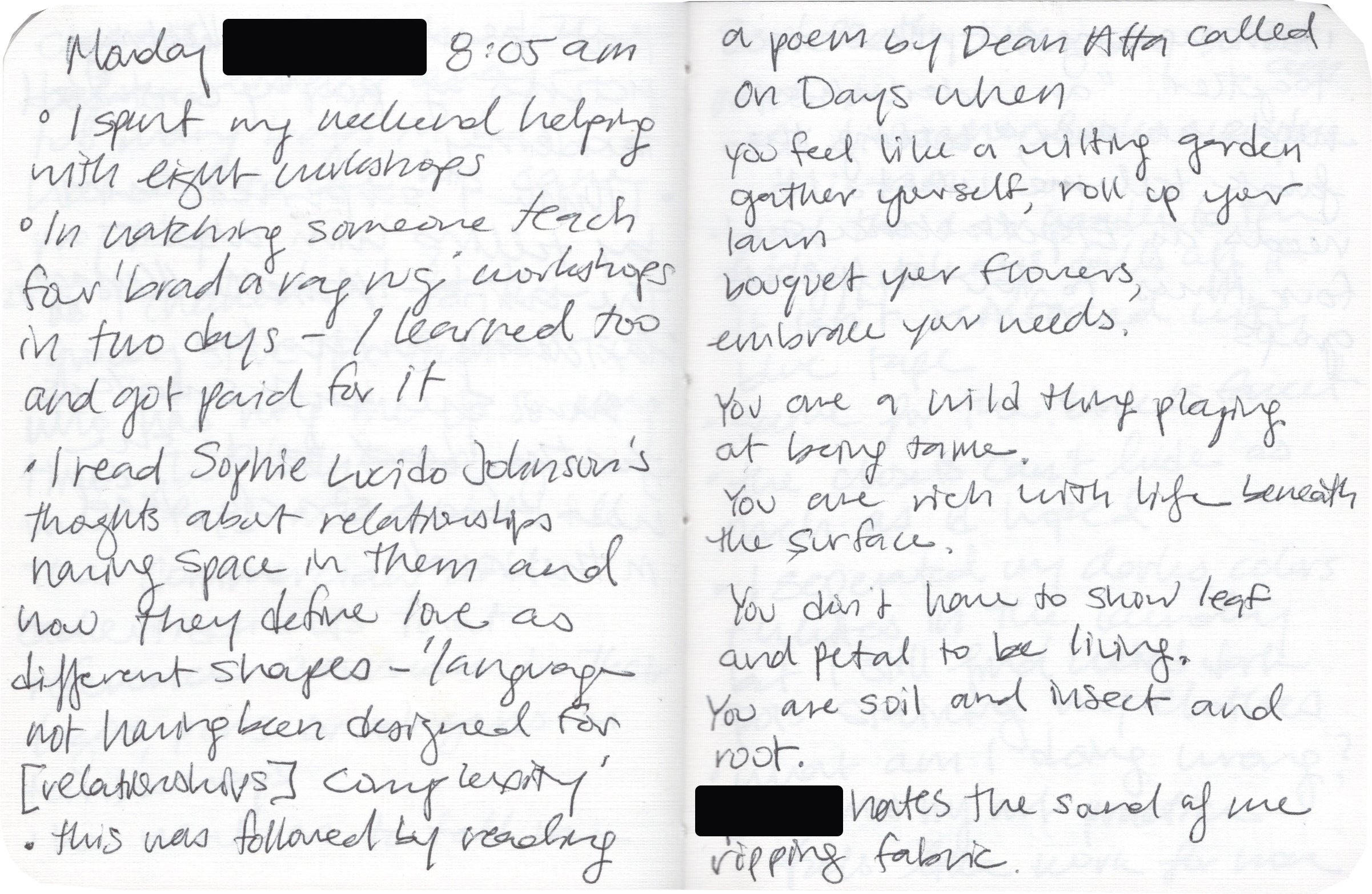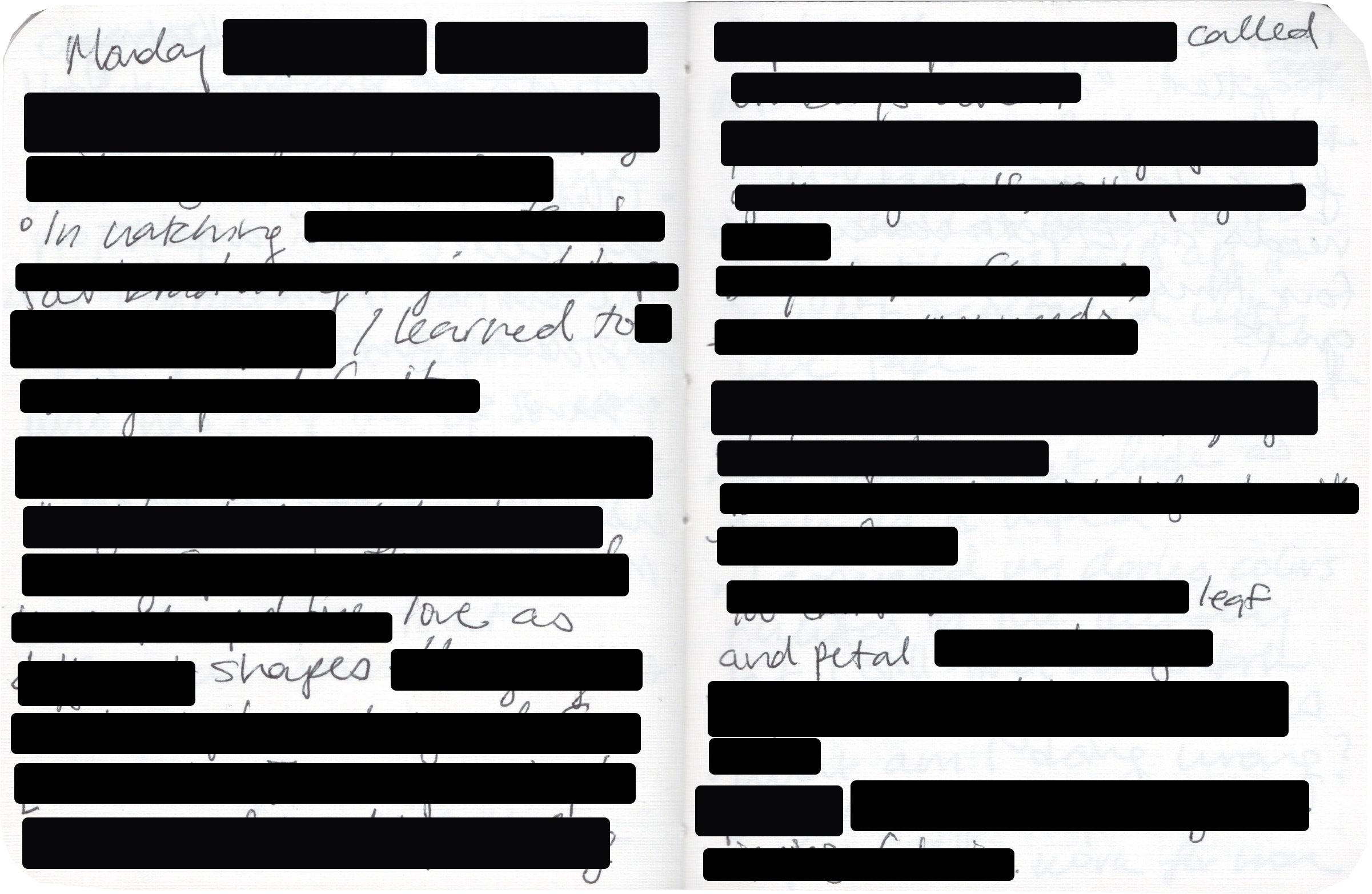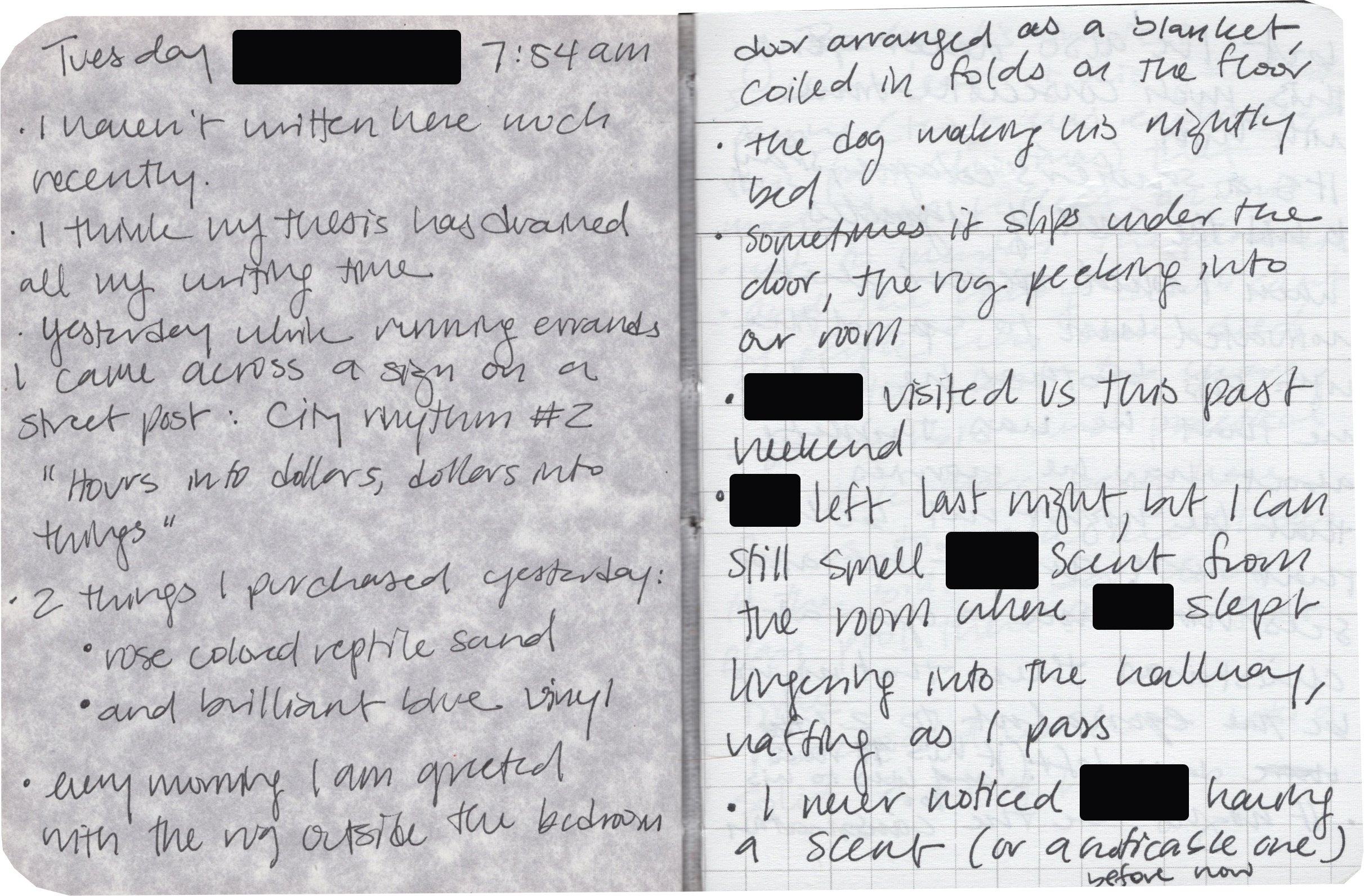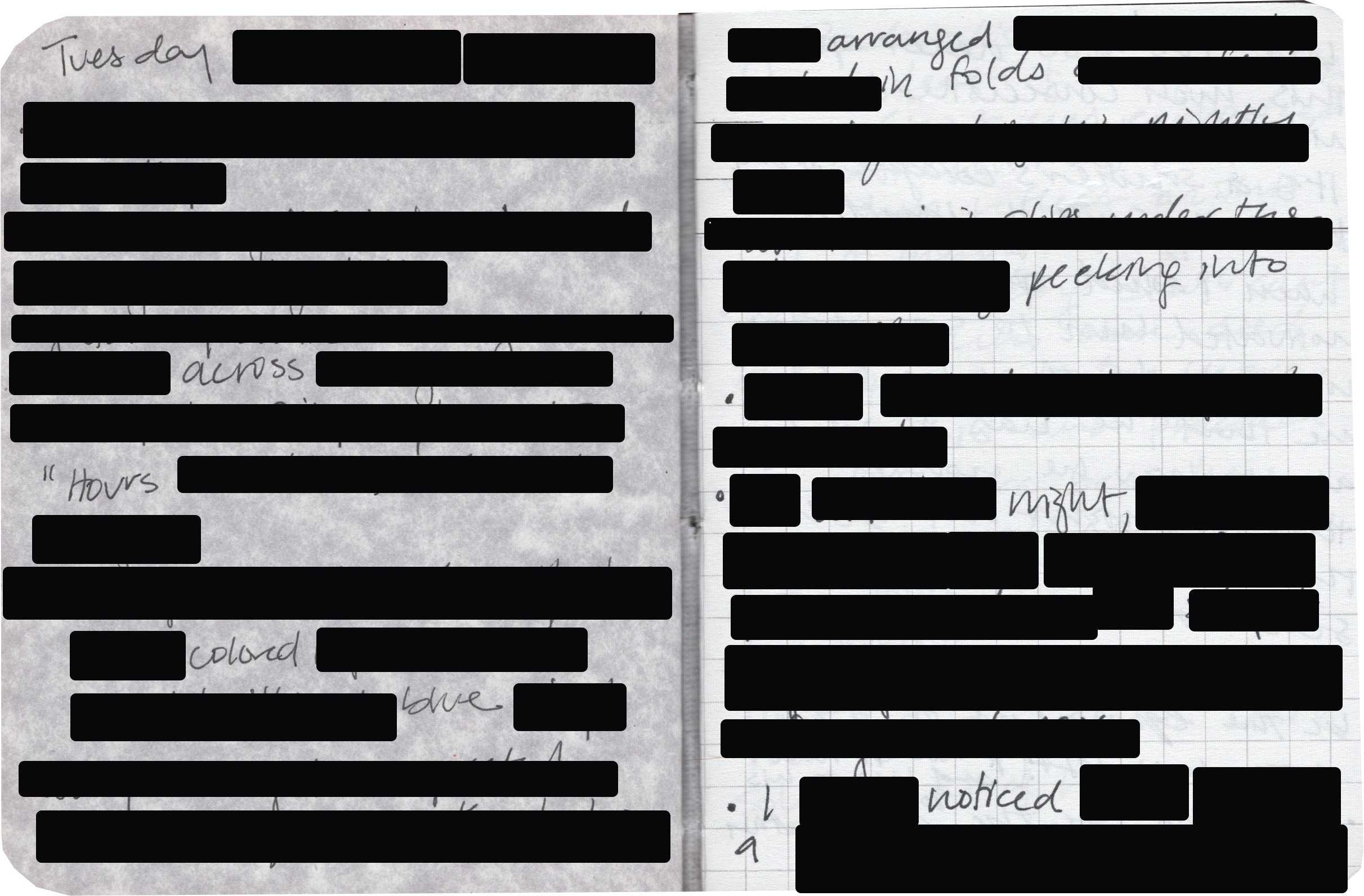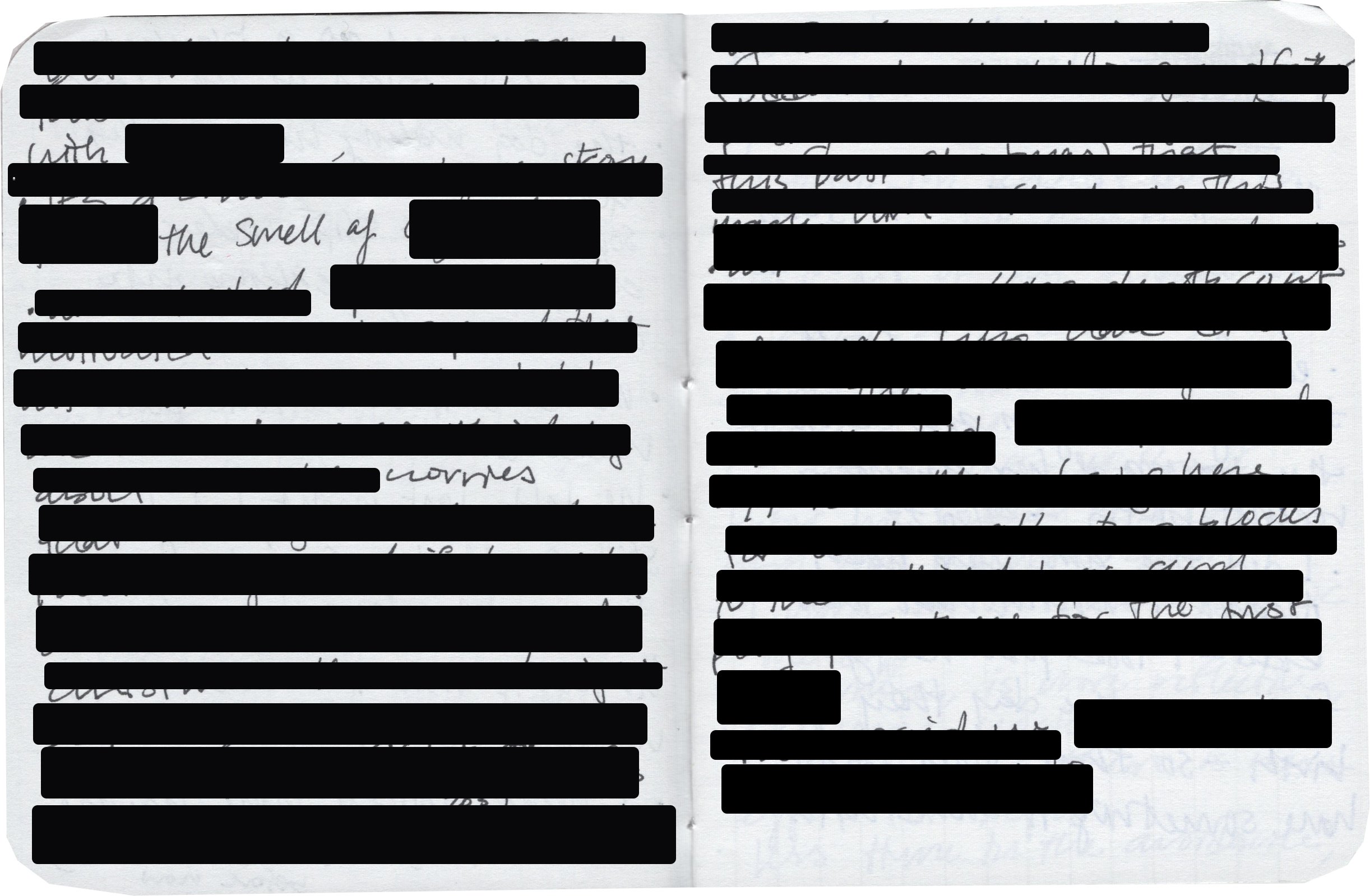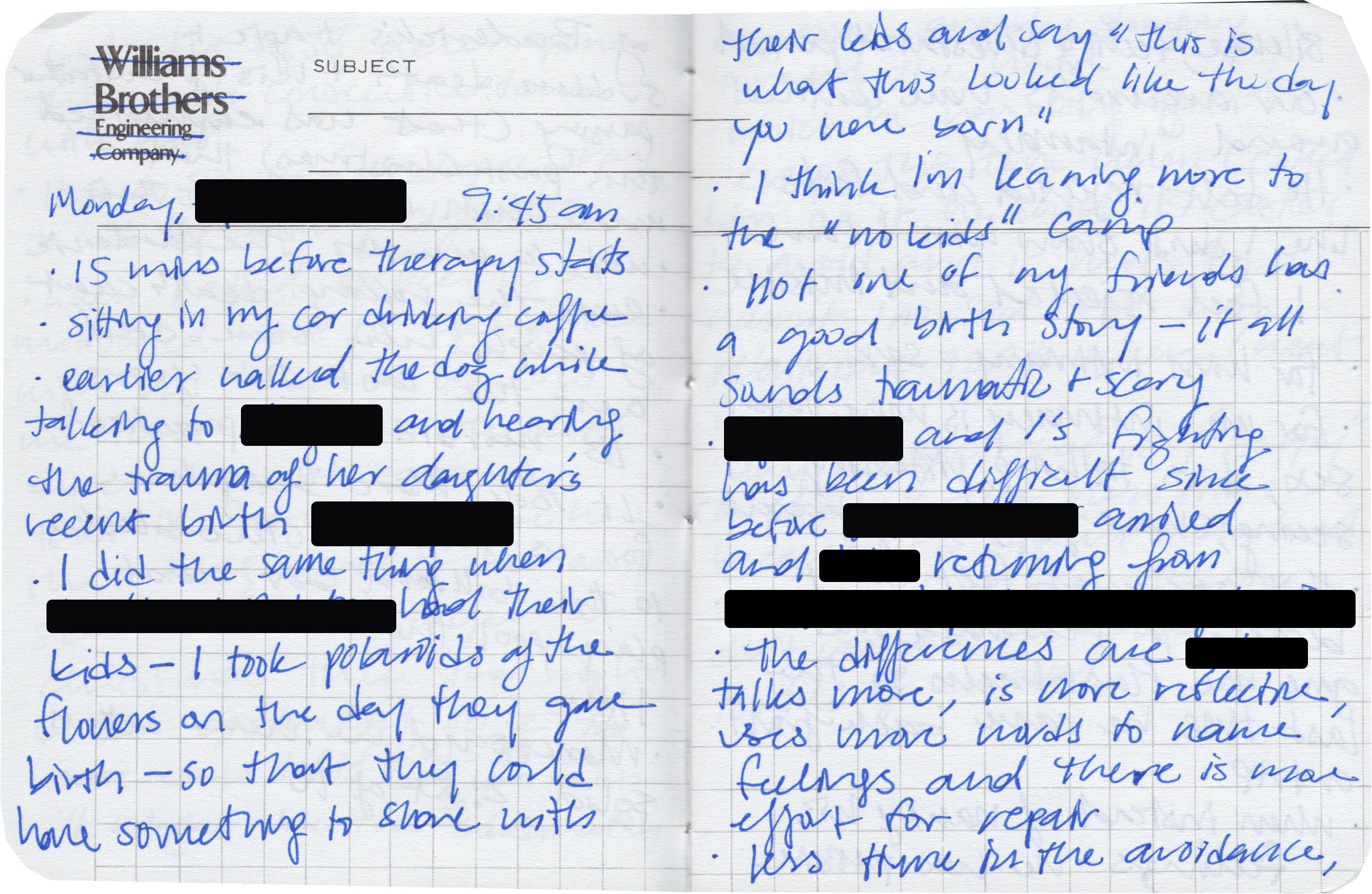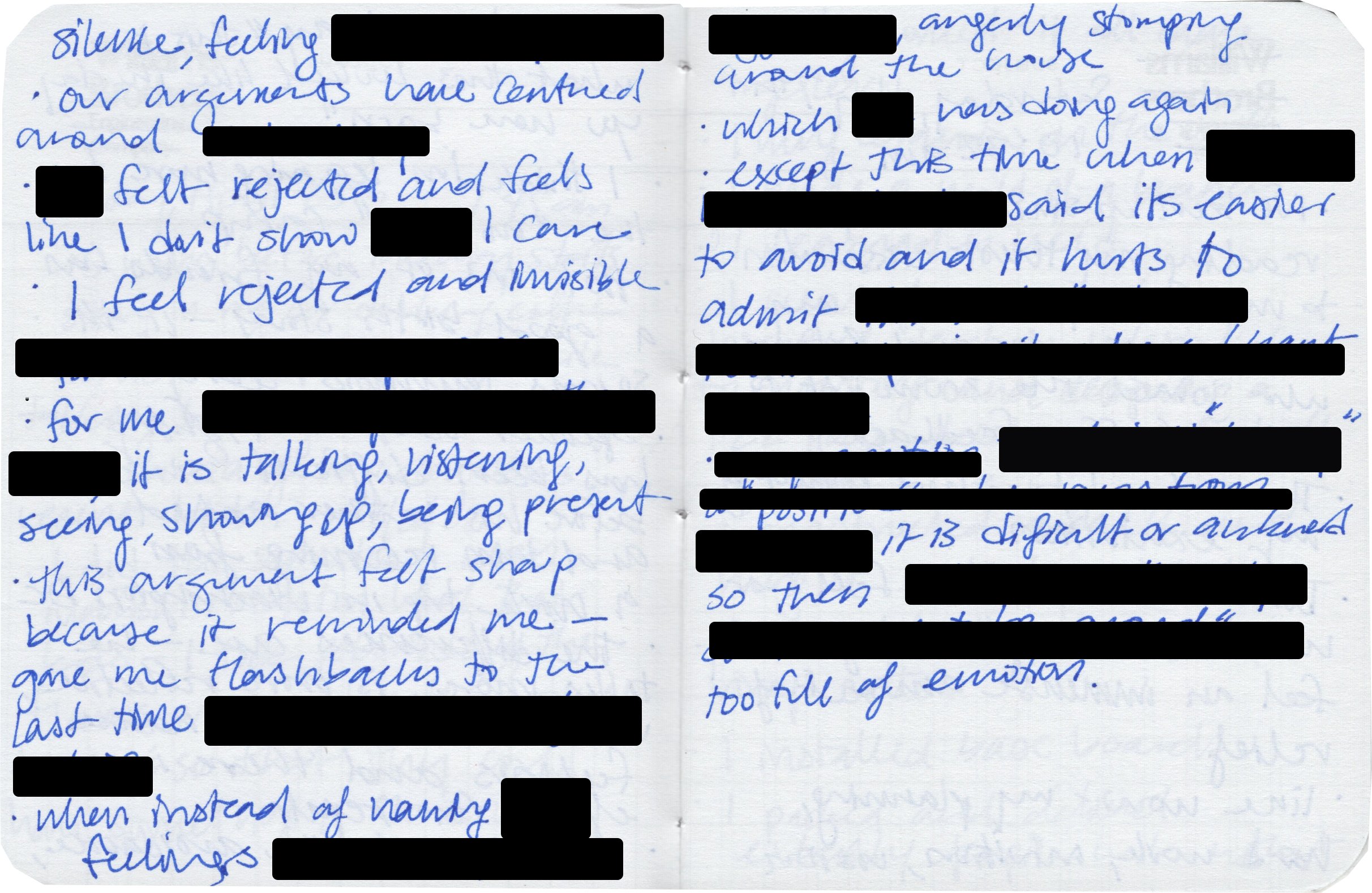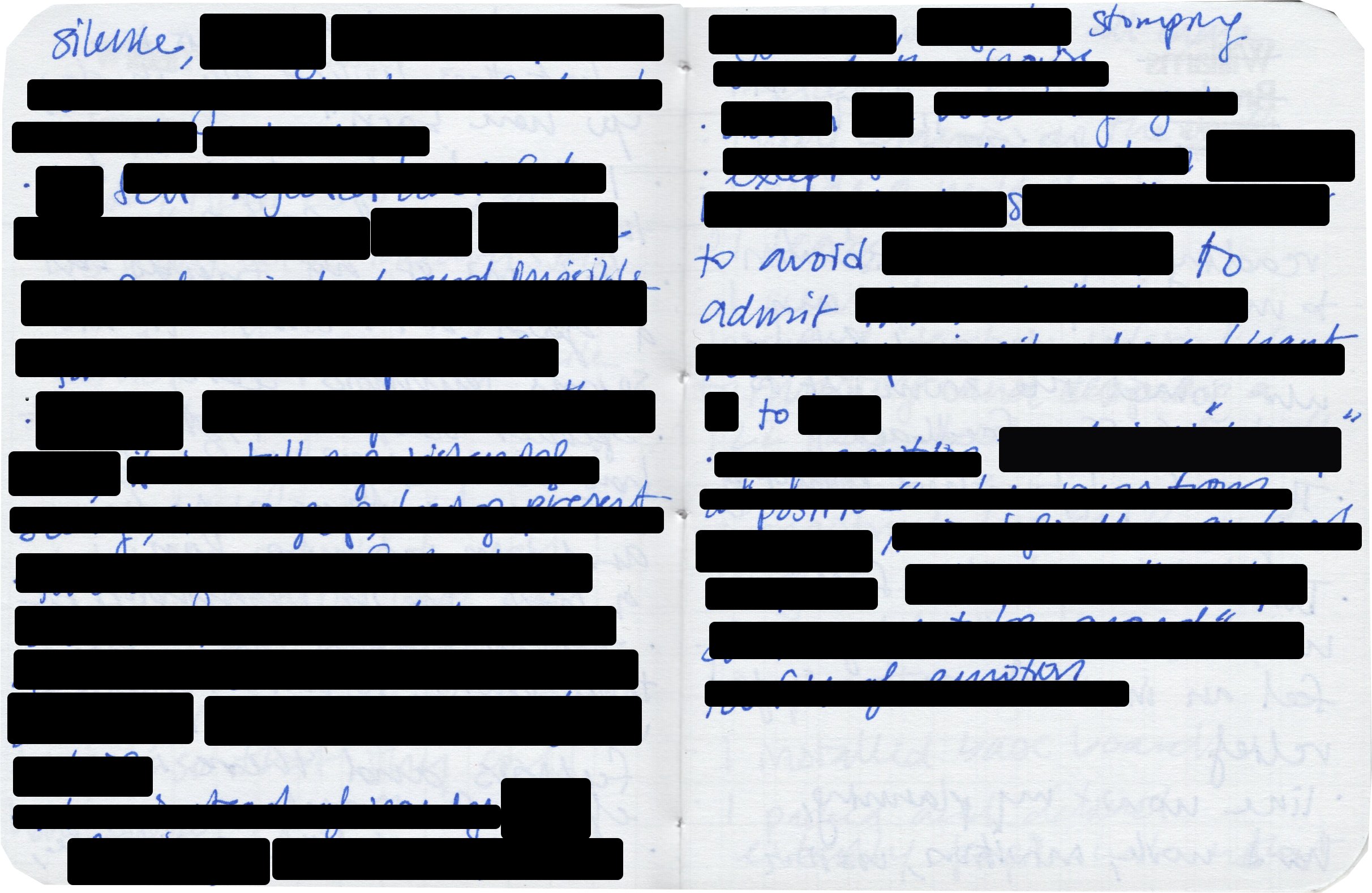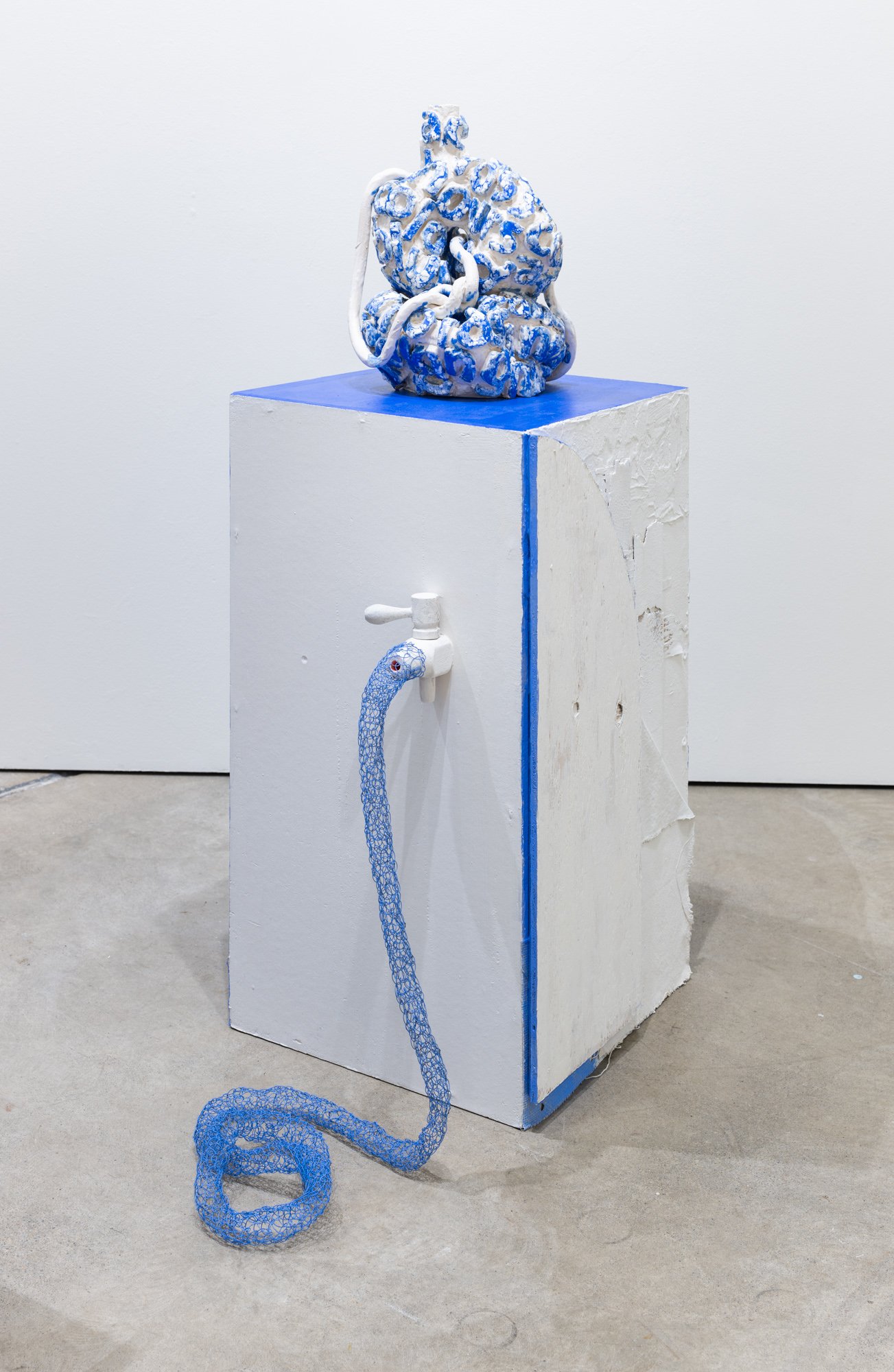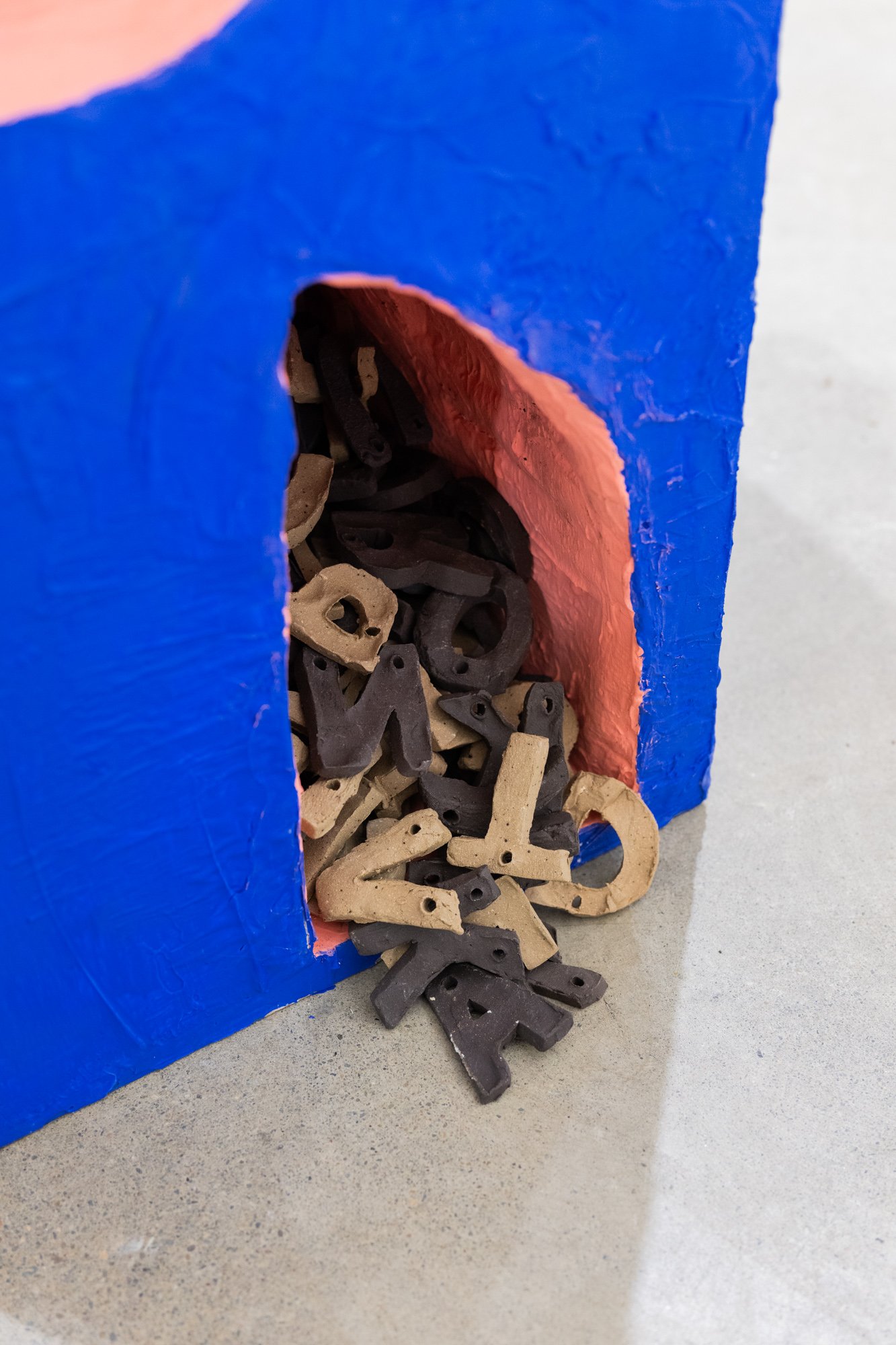Alphabetical Diaries, by Shelia Heti was recommended to me by artist and printmaker, Alyson Provax during a studio visit last year. Of course the book was not actually published until February of this year, but Alyson had emailed me a link to the precursor, New York Times article, “A dairy in alphabetical order: A to C” to read during the interim.
Both the article and the book are exactly as their titles suggest—sentences plucked from old diaries arranged alphabetically.
Alyson Provax in collaboration with Zach Clark, Like things go away, 72 page artist book, risograph printed in Steel, Moss, & Black on French and Prang papers with letterpress cover, stitch bound. Edition of 200, 6 x 6.25 in., National Monument Press, 2023, with no. 32 in my personal collection and photographed above.
Admittedly, I haven’t read either the article or the book in their entirety. Yet, I am fascinated by their premise and the idea of uncovering patterns hidden in personal archives.
“A book about how difficult it is to change, why we don’t want to, and what is going on in our brain. A book can be about more than one thing, like a kaleidoscope, it can have many things coalesce into one thing, different strands of a story, the attempt to do several, many, more than one thing at a time, since a book is kept together by its binding. A book like a shopping mart, all the selections…A book that is a game.”
Sheila Heti, Alphabetical Diaries, the first few lines of chapter A, pg 6
My dog, Mr. Wilde is curious too.
What would I learn if I tried this? I know I don’t have the patience or time to alphabetize 500,000 words from a decade’s worth of journals like Heti. But what if I took the last sentence from each notebook entry I logged in the last year? What patterns could I find about my self?
A Papier Tigre notebook entry from Wednesday, February 21st 2024, 7:27 am. The last sentence here would be: Lines peeking and extending past, but my mind connects them, filling in the absent details.
From January - December 2023, I chronologically listed thirty-six last sentences. To my surprise, I found questions were immediately answered by the following sentence. And the answers weren’t wrong. They were strikingly correct.
A series of entrances and exits: absences and presence.[1]
All this hard work and I can make or break it in the final step.
“…specific questions useful in different situations, examples: what is the question no one is asking?”[2]
How much time do we give our search of color, texture, and form living in harmony?
All I can see at times when we fight.
Getting out of a loop.[3]
“These sentences—they will begin having already been sentences somewhere else and this will mark their afterlife, and this will be their debut.”[4]
I was so uncomfortable I didn’t say what I saw.[5]
What is surrounding my periphery and falls into research.
For a moment, the sound of insects stopped, then started buzzing even louder.[6]
Is one way of being better than the other?
“Imagine the line as a load-bearing wall.”[7]
“Who knows what else I’ve hidden in there because I could make no sense of it at the time and found nowhere else to put it.”[8]
Going to bed upstairs past midnight.
He calls ‘the beast’ his brother when he is drunk.
“…dappled with sun and shadow.”[9]
Rigmarole is an interest in the possibilities embedded in miscommunication.
A load of soggy pinks droop at the pit of the bottom while the other machines vibrate too fast for me to look.
Forms of touch.
And proceeds to clean up the puke, yelling that he has to do everything.
Question: what is a rigmarole?
In many ways it feels like a metaphor for my relationship right now—the rigmarole of rupture and repair.
Not just of routine and comfort.
“It amasses a body through the collection of simple movements.”[10]
How do you feel?
I feel more strained in our relationship than I’ve ever felt.
How are words received and where do they land?
“…slow scribble, reciprocity.”[11]
Saying my truth and how I feel and what I want without judgement/upsetting feelings.
And I am still avoiding the last few questions of the sexual communication part I questions. [12]
“The shape of holding my words together.”[13]
Yet, social media doesn’t feel good for my mental health.
I feel very lonely today.
Everything would be in jeopardy.
In our matching raincoats.
“A yellow that dirties easily, exhausted at being asked to smile and be happy.”[14]
Timing is funny that way.
Shortly after our studio visit, Alyson and I elected to pair ourselves, submitting my ceramic vessels in conversation with her letterpress works as a response to The Vestibule’s open call prompt: time.
We proposed that our varied methods of printmaking, writing, and constructing mimic the slipperiness of language as simultaneously stiff and malleable. Recorded in material choices like clay, ephemeral papers, and selected text, language and time are mapped, molded, and manipulated. Paired together, our collective words and phrases straddle between legible and illegible. Our central theme being language is a paradox— both an elusive and exacting timekeeper.
Now, six years after having first encountered Alyson’s intimate works as a large scale billboard while living in Seattle, I will be returning to exhibit alongside Alyson as well as Karey Kessler, and Tara Tamaribuchi at the Seattle Art Fair, collaboratively co-curating a booth with The Vestibule gallery July 25th-28th.
Timing is funny that way.
[1] Melanie Cooper Pennington’s Climb In and Back Out Again, https://www.youtube.com/watch?v=iClbDcldYLY
[2] On Being with Krista Tippett, “Amanda Ripley Stepping out of the ‘zombie dance’ we’re in , and into ‘good conflict’ that is, in fact, life-giving,” https://onbeing.org/programs/amanda-ripley-stepping-out-of-the-zombie-dance-were-in-and-into-good-conflict-that-is-in-fact-life-giving/
[3] Esther Perel and Mary Alice Miller, “Letters from Esther #43: Would you rather be right or be married?,” https://www.estherperel.com/blog/letters-from-esther-42-would-you-rather-be-right-or-be-married
[4] Renee Gladman and Zoë Hopkins, NSE #765 (the new social environment), The Brooklyn Rail, https://www.youtube.com/watch?v=tRtdORElosk
[5] A man was masturbating on a park bench in front of the church
[6] Hiroko Oyamada, The Hole, translated by David Boyd, New Directions Publishing, New York, NY, 2020
[7] Lara Mimosa Montes, Thresholes, Coffee House Press, Minneapolis, MN, 2020
[8] Heidi Julavits, The Folded Clock A Diary, Double Day, 2015, pg 33-34
[9] Anne Truitt, Daybook: The Journal of an Artist, Penguin Books, 1984, pg 233.
[10] Brittany Mojo, “Accumulative Time,” Studio Potter, August 1st, 2023, https://studiopotter.org/accumulative-time
[11] Sheila Hicks, Weaving as Metaphor, edited by Nina Stritzler-Levine; With Arthur C. Danto and Joan Simon, Megan Mesloh’s signed copy
[12] Esther Perel, Rekindling Desire, The Basics Part 1: Understanding Eroticism
[13] Renee Gladman, Calamities, Wave Books, Seattle, WA, 2016
[14] Dawn Cerny, Les Choses: Dawn Cerny in Conversation with Catharina Manchanda, Seattle Art Museum Artist Spotlight, April 29th,2021, paraphrasing a quote by Dawn Cerny answering my question about the use of the color yellow



